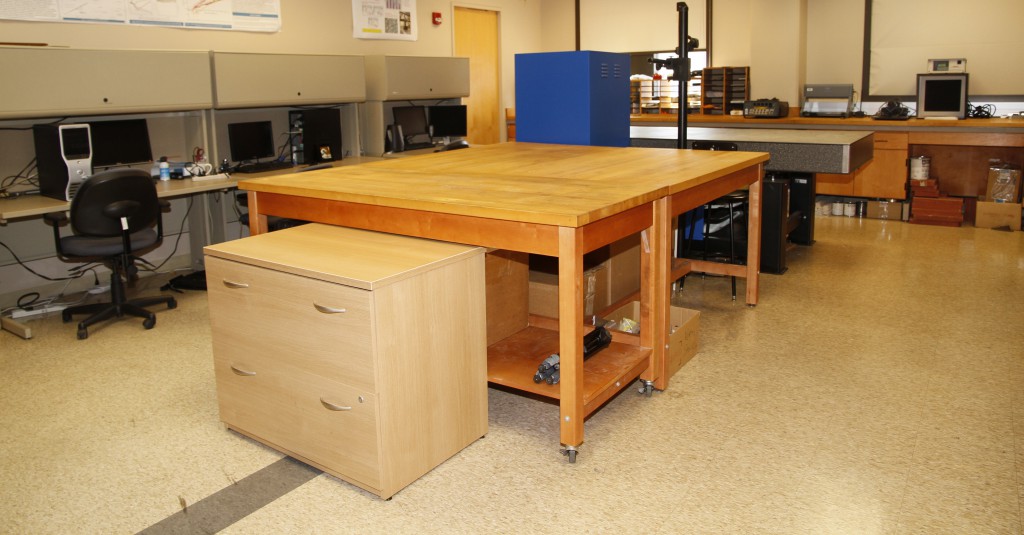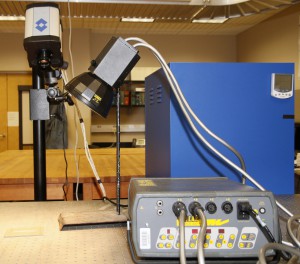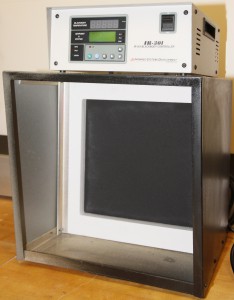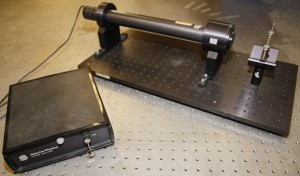
This 1,200 square-foot laboratory contains several systems used to conduct nondestructive testing and evaluation (NDT&E). Included in the equipment are infrared camera, visual cameras, several heating applicators, and other items.
 Infrared Thermography
Infrared Thermography
Infrared camera Model SC4000 MWIR (FLIR systems, Goleta, Ca.) with a 3.0-5.0 µm detection wavelength and an adjustable integration time. The camera is capable of capturing 400 frames per second at full frame resolution (320 x 256 pixels). The frames are captured using data acquisition software developed by FLIR systems, North Billerica, MA, and include:
- ThermaCAM Rtools
- ExaminIR
Also, the camera has the capability to image at microscopic resolutions by using extension rings.
Extended Black Body Heater
The extended area black body (Model IR-160/301, Infrared Systems Development, Orlando, FL) has an area of 30 x 30 cm (1 x 1 ft) coated with a high emissivity paint (ε = 0.96). The surface temperature of the heater can be varied from room temperature to 350oC by use of a temperature control unit.
Visual Imaging
Several state of the art visual cameras and detectors are available. The detectors are equipped with different lenses to enable microscopic and telescopic capacities; filters are available to enhance contrast and can be used for multispectral analysis.
 Holographic Interferometry
Holographic Interferometry
We have the capability to do holographic interferometry. In double-exposure holographic interferometry this principle is applied to obtain an interference pattern between two reconstructed images of the same object. A holographic recording is first made with the object in some reference state. The object is then moved or deformed as desired, and a second hologram is made on the same photographic film. During reconstruction two waves are created and interfere in the space beyond the hologram. The resulting interference fringes record the local displacement of the surface of the object.